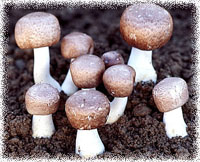Home»Beta Glucans
:: Beta Glucans
» Beta Glucans - What are they?
Beta-glucans are polysaccarides of D-glucose monomers, linked together by glycosidic bonds. They occur most commonly as cellulose in plants, in the bran of cereal grains, the cell wall of bakers' yeast, certain fungi, mushrooms and bacteria. |
 |
The use of Beta-Glucans originated back in the 1940s when researchers described a crude yeast cell wall preparation called Zymosan. They discovered that this preparation stimulated non-specific immunity, but were unable to find out why this occured, or which element caused the stimulation.
It wasn't until the 1980's that a number of scientists began to uncover the process used by Beta-glucans. In 1985, Dr Joyce Gzop reported in the Journal of Immunology that certain cells, called Macrophages, had a special receptor for Beta-glucans.
Macrophages: From the Greek meaning 'big eaters', macrophages are white blood cells that exist within tissues. They are created by the division of another type of cell called Monocytes. Both these types of cell are known as phagocytes. The macrophages are vital to our innate immunity as well as initiating specific immune responses. They work by engulfing and digesting cell debris and pathogens. From an evolutionary perspective they are one of the oldest immune cells known to man.
¦¦ Beta Glucans Products

Beta Glucans